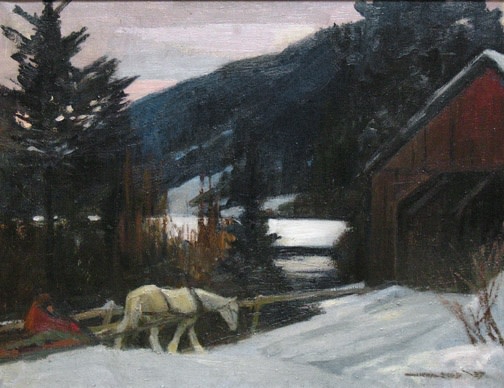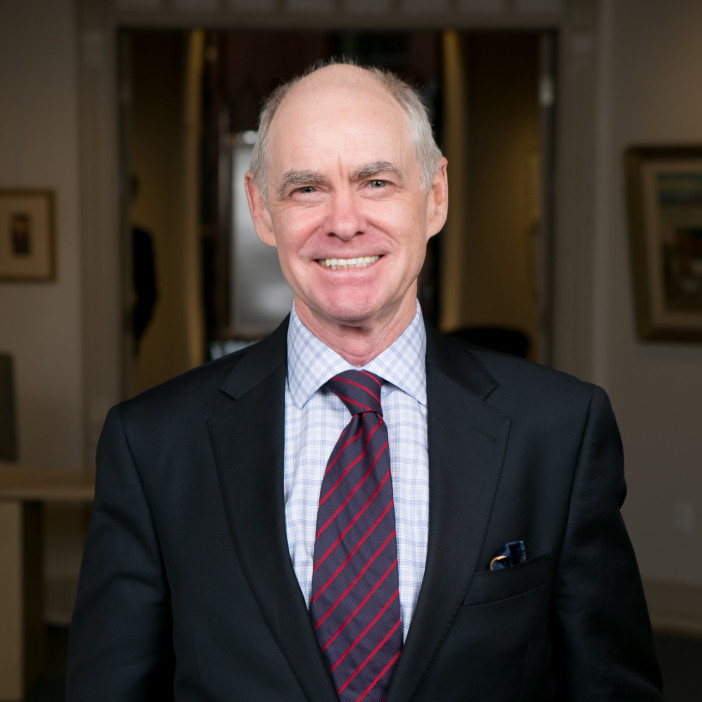Frank Hennessey: An Important, Yet Underrated Artist

Frank Hennessey, Approaching a Covered Bridge, 1937, oil on canvas, 17 x 22 in.
Provenance: Private collection, Montreal
“Frank Hennessey, whose death in the autumn of 1941 brought to a close a brilliant career, was a painter of fine taste and sensitive perception”, William Colgate wrote about Frank Hennessey in his 1943 book Canadian Art: Its Origin and Development (pg. 139, Ryerson Press, Toronto).
Frank Hennessey is an important , yet underrated artists of the Ottawa region of his generation. He was a a full member of the Royal Canadian Academy of the Arts where he showed regularly in the RCA exhibitions at the Art Association of Montreal and The Art Gallery of Toronto , a member of the Ontario Society of Artists , Ottawa's Studio Club and Ottawa Group, a Fellow of the Royal Society of Artists, included among the elite group of Canadian artists at the now iconic 1924 British Empire Exhibition in Wembley and the Exposition D'Art Canadien in Paris of 1927 at Le Musée de Jeu de Paume. (In the Paris exhibition the Hennessey lent was one owned by the National Gallery of Canada.) He was clearly celebrated during his lifetime as an artist of great ability and merit.
A painting the important quality of our 'Approaching a Covered Bridge, 1937, undoubtedly composed on a trip to the Gatineau, represents an astute purchasing decision in today's art market. Precious little is dedicated to the all too brief career of the fine Ottawa based artist Frank Hennessey, R.C.A. (1894-1941).
Jim Burant in his History of Art and Artists of Ottawa and Surroundings, 1790-1970: Part II, 1880-1945 (The Ottawa Art Gallery, 1995) probably makes the greatest contribution to date as to what is available in print about him. He notes that Hennessey went on an exploration trip to the Arctic in 1908 as an assistant naturalist and artist. Joining in 1913 the Geological Survey and during the first war, “Moved into a war related position...he spent the rest of his life as a civil servant, joining the Entomology Division of the Department of Agriculture in 1921 as an artist and designer”.
He also cites Newton MacTavish from Ars longa: “Hennessey’s experience provides a refutation to the belief, held firmly by some, that the craftsman who devotes most of his time and attention to drawing minute, carefully-controlled subjects, such as are demanded in commercial and technical work, loses his ability to produce in any other fashion... "Hennessey used to draw for the Government at Ottawa numerous precise illustrations to accompany the text written for pamphlets or anything of the kind needed for the dissemination of information.
Doing that work, he developed into an expert draughtsman, but the remarkable further feature is the fact that in his real art work he sets aside the precise, constricted methods, which some observers suppose limit the results, and produces paintings, especially large pastel landscapes, that are notable for their broad, loose treatment, spontaneity, and sparkle.
Hennessey usually worked in the open, direct from nature, and frequently, while the light lasts during the middle of the day, completes in one essay a satisfactory large pastel that never afterwards is touched. "Oftentimes Brownell and Hennessey take sketching trips together, following by motor-car the Gatineau River northward into the Laurentian hills to a place called Pickanock... "Brownell leans towards uncultivated fields, with stumps and rocks showing through the turf, with animals—maybe cattle, maybe horses, maybe swine or sheep—cropping contentedly grass, while Hennessey seeks out the rushing stream or river. And should men be cutting or hauling ice in winter or twirling logs in summer, there is no complaint. For each artist is a law unto himself and in that law lies the seal of his salvation...” (Ars Longa , Newton McFaul MacTavish, The Ontario Publishing Company Limited, 1938)
Further on Burant described the Studio Club which, “Eva Major-Marothy speculates that the Studio Club may have formed the core of the 'Ottawa Group' which held an exhibition at Hart House in Toronto in January 1924. This Group included Paul Alfred, Harold Beament, Frank Hennessey, Florence McGillivray, Graham Norwell, Yoshida Sekido, and David Milne, in one of his few incarnations as an 'Ottawa' painter. This 'Group' was intended to be Ottawa’s equivalent to Toronto’s Group of Seven and Montreal’s Beaver Hall Hill Group; it wanted 'to keep alive a healthy interest in art, modern Canadian art in particular.' Soon after the exhibition, Beament and Norwell left for Europe and Milne returned to New York, while the others carried on, individually or in conjunction with the activities of the Art Association.'' (pg. 23, History of Art and Artists of Ottawa and Surroundings, 1790-1970: Part II, 1880-1945, The Ottawa Art Gallery, 1995).
In a brochure written about Commander Anthony Law who was a student of Frank Hennessey we find the following, “Hennessey was a practical exponent of the pastel medium and used chalks with vigour and confidence. The country under snow was an alluring time of year for him, as were the spring thaw and the break-up on rivers. He enjoyed painting the subtle obscurities that came with sundown on winter days. Hennessey, who excelled in oils as well, taught the young artist how to interpret the wilderness on canvas... ” (C. Anthony Law, A Retrospective, Bernard Riordon, Art Gallery of Nova Scotia 12 May - 25 June, 1989).
All this is to emphasize that, if you respond favorably to the visuals of "Approaching a Covered Bridge", in my opinion you will be hard pressed to find a painting by an artist of comparable credentials historically and with such integrity and available for such a modest price.






Add a comment